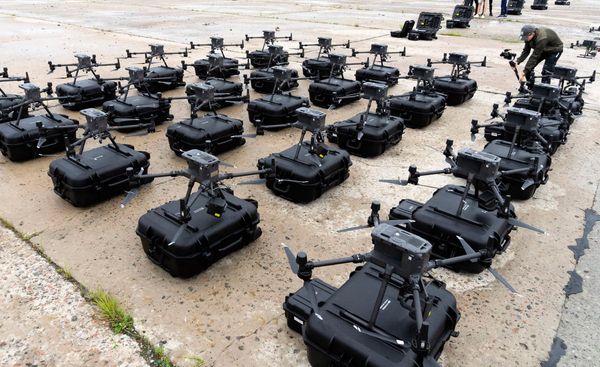Written by Yeh ji-ren
Translated by Brian Hioe
China announced the establishment of six new free trade zones (FTZs) on October 26, 20 days after the announcement of a new area of the Shanghai Free Trade Zone.
With the new FTZs in China, one also notes similar Free Economic Pilot Zones (FEPZs) have also been established in Taiwan. But it has been a long-debated topic with political elements, especially during the election season.
Would free economic pilot zones allow for Chinese goods to be passed off as Taiwanese goods?
Due to the U.S.-China trade war, there are some concerns that the loosened restrictions of FEPZs could allow for Chinese goods to be passed off as “Made in Taiwan.” The U.S. government fears that Chinese commodities exported to the U.S. will first be shipped to Taiwan as a way of avoiding the high export tariffs currently imposed on China.
Can Chinese goods be passed off as “Made in Taiwan” goods through Taiwan’s FEPZs? Can the FEPZs be an accomplice in hiding the origin of those Chinese products, and as a result, harm local farmers or manufacturers in Taiwan?

According to the amendment of Article 3 of the Regulations Governing Issuance of Certificates of Origin and Certificates of Processing on April 3, 2018, if exported goods are to be labelled “Made in Taiwan,” they must meet one of the following conditions:
- They are wholly obtained or wholly produced in Taiwan.
- If the processing, manufacturing or materials of the products involve undertakings in Taiwan and other countries or regions, the last substantial transformation shall be undergone in Taiwan.
According to the first condition, products must be completely produced in the country, whether they are mineral, agricultural, or fish products, in order to receive the label “Made in Taiwan.” With few exceptions, to qualify as “substantially transformed” under the condition requires more than 35 percent of processing and producing done in Taiwan, or to be sufficiently transformed to change the original product category in order to qualify as a “Made in Taiwan” product for exports.
Given these conditions, it’s difficult for foreign products like farm produce and fish to “wash away” their origins in Taiwan. As such, it’s hard to say that Chinese agricultural products transiting through the FEPZs would hurt Taiwanese industry. It’s also not easy for Chinese products to be labeled as “Made in Taiwan” after only briefly transiting in Taiwan before heading to the United States.
Free trade zones and free economic pilot zones are both experimental
What we should note is that both the Chinese FTZs or the Taiwanese FEPZs are for pilot experiments. They’re specifically used to test small-scale policies before rolling out out to other regions. Why?
To put it simply, government can be cautious regarding liberalization, the loosening of restrictions, and innovative concepts, while also recognizing their benefits. Hence, governments would hope to test out policies in smaller areas, allowing for detailed observation of potential problems through tightly controlled variables.
If these policies are later enlarged in scope but have unexpected results, the government won’t be dealing with a complete unknown. That’s the true value of a FTZ or a FEPZ. Therefore, it may not be appropriate to examine the success of a pilot zone in terms of its direct contribution to the economy.

Is China continuing to add free trade zones because they’re beneficial to the economy?
China’s Vice Minister of Commerce Wang Shou-wen (王受文) stated that the latest FTZs are to implement the Foreign Investment Act, which ensures “stable foreign investment and create a transparent, predictable investment environment.”
Since establishing the Shanghai Pilot Zone in 2013, China has announced 19 more free trade zones throughout the country. The aim in establishing the first wave of free trade zones in 2013 was to encourage development, through streamlining currency convertability. The second wave of FTZs established in 2015 were Tianjin, Fujian, Guangdong, with the aim to make investment more convenient and provide for more effective regulation and supervision. Recently, FTZs in Shandong, Jiangsu, Guangxi, Hebei, Yunnan, and Heilongjiang all have different development goals but the primary one is to push forward the “One Belt, One Road” Initiative.
From the perspective of development goals alone, it may be acceptable to introduce a FTZ in response to emerging central and local development needs. But whether this is effective remains questionable.
The Wall Street Journal pointed out that very few American companies had any breakthroughs in the Shanghai FTZ. Though some administrative processes might be simplified in the zone, trade liberalization and international reform continue to be unsteady.
Reuters reported that with the slowing of economic growth, the authorities in Beijing have instituted strict capital controls and oversight. For many companies, the promise of free circulation of currency within China remains unfulfilled. In the Shanghai FTZ, the only clear rule is to not threaten financial and internet security while everything else is muddy. If companies have to prioritize the national government’s definition of “security” in a small FTZ, it’s not hard to imagine the ineffectiveness of such pilot zone.
While the Shanghai FTZ is a symbolic area to promote international commerce, many corporations have already found it difficult to expand their operations. Then what would the other 19 FTZs look like and how would they really contribute to the development of entrepreneurship and innovation in China?
Why does Taiwan also want to set up free trade pilot zones?
Setting up pilot zones and special economic zones in China has not accomplished its goals of encouraging development. It has not yielded the expected results in terms of liberalization and internationalization either. Given the failures, foreign capital will not place too much faith in China’s FTZs moving forward. This should serve as a warning for Taiwan before setting up FEPZs. Since 2013, Taiwan has already established numerous FEPZs including six seaports, Taoyuan International Airport, and Pingtung’s Agricultural Biotechnology Park.
Compared to China, Taiwan is a small island but it offers high economic freedom and an established democratic rule of law. Taiwan’s level of economic development is also more advanced than that of China, having already entered the stage of an “innovation-led economy.”
Comparatively speaking, China is still at the stage of an “efficiency-driven economy,” with the aim of lowering production costs and pushing for tax concessions.
Taiwan already went through this stage a long time ago and it does not have the same amount of concerns as China does when it comes to further liberalization or internationalization. If there is a need to loosen restrictions in order to push an innovative practice across the country, this is more easily done in Taiwan. So does it make sense for us to set up free trade zones according to the same logic as China?

In terms of countries or territories with limited geographic space, such as Hong Kong and Macau, or small European countries such as Holland, Belgium, and Luxembourg, we can’t find that many examples of free trade zones. We would more often encounter examples like Singapore, which only has one Airport Logistics Park and several wharfs that serve as a free trade zone. The successes of Singapore’s push for economic liberalization to achieve internationalization are visible in that, Singapore was placed first out of 63 countries in the 2019 World Competitiveness Yearbook.
As a small country with a small population, is it appropriate to set up many free trade zones in Taiwan?
Taiwan as a data-driven economy
By the 21st century, Taiwan had already entered the stage of economic development of an innovation-driven economy. If we did need a pilot area, it would probably be for the sake of experimenting with an innovation- and data-driven economy.
In the 1980s, with improvements in labor conditions, the manufacturing sector gradually lost its competitiveness due to rising costs. Policy considerations then leaned toward promoting techniques for enhancing manufacturing productivity to try and counteract the loss of competitiveness. But this could not prevent the wave of Taiwanese factories relocating their operations elsewhere. The failure to complete industrial upgrade was a significant factor contributing to Taiwan’s inability to keep its industries localized.
Although that was 30 years ago, the advancement of Taiwan’s manufacturing technologies still remains a top policy priority. Outside of a few large-scale science and technology manufacturers, this is primarily targeting small-to-medium sized manufacturers and their supporting industries.
The European Union has placed a great deal of focus on the emerging data economy, with the aim of setting up what is termed as a “Digital Single Market.” Through the Horizon 2020 plan, the EU has provided a great deal of resources for researching and developing plans for infrastructure. It has brought the brightest minds together to tackle the EU’s challenges of digitization, promote high-tech innovation, and confront difficult issues regarding economic innovation and society. In this way, the EU hopes to become a world leader in in different fields under the premise of an emerging data economy.
If a FEPZ is necessary, then Taiwan should set up policy aims to prepare for the era of data economy, to also build up Taiwan as one of the first countries to successfully undergo digital transformation. This can serve as a means of combating China’s “Red Supply Chain.” Through developing deeper links with the world’s largest free trade area (FTA), the EU-Japan Economic Partnership Agreement, Taiwan can also make up for its lack of presences in other FTAs.
To establish a forward-looking special economic zone should first aim to build up Taiwan as a leader in the data-driven economy.
READ NEXT: The ‘1992 Consensus’ Never Existed — Beijing Only Wanted ‘One China’
TNL Editor: Daphne K. Lee (@thenewslensintl)
Read the original article in Chinese here. If you enjoyed this article and want to receive more story updates in your news feed, please be sure to follow our Facebook.







